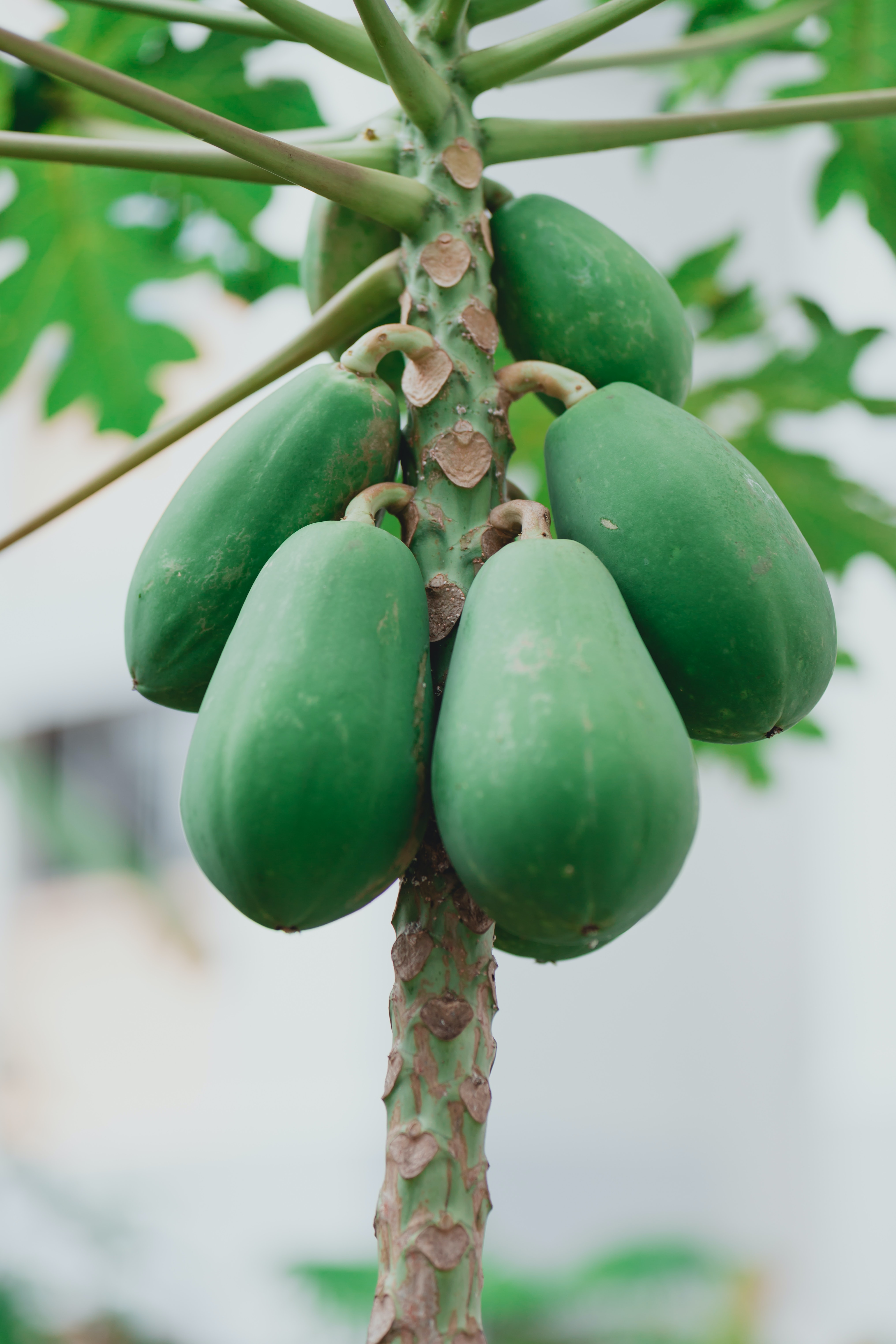

Carica papaya L.
|
It is commonly known as Papita and belongs to the family Caricaceae. Being a rich source of antioxidants, vitamin A, C and E, it is good for stomach health like constipation and irregular bowel movement. Papita contains Papain, a digestive enzyme with anti-inflammatory effect. Furthermore, C. papaya water extract upregulates interleukin-12 subunit p40 (IL-12p40), interleukin-12 subunit p70 (IL-12p70), interferon-gamma (IFN-γ), and TNF-α, but inhibits IL-2 and IL-4 to enhance survival of peripheral blood mononuclear cells. Mode of Consumption : Salad, Cooked and Boiled |
| Plant Details | Agro-climatic Zone | Vernacular Names | Pictures |
| Scientific Name: Carica papaya L. Family: Caricaceae Dumort. Class: Magnoliopsida Order: Brassicales Genus: Carica L. Fruiting Season: August to November Parts: Fruit |
|
Arunachal Pradesh : Mak saan phow, Amita, Omri Assam : Amita Bihar : Papita Karnataka : Pappaaya, Pappaayi, Parangi Maharashtra : Pappayi, Popay Manipur : Awathabi Mizoram : Thing-fanghma Tamil Nadu : Pappali Uttar Pradesh : Papita West Bengal : Papeya |
Fruit Sliced papaya  Plant bearing fruits |
| Compound/Extract | Activity | Mode of Action | Marker/References |
| Leaf extract | Anti-inflammatory | Papaya leaf extract increased nitric oxide production (NO), costimulatory receptor (CD80), tumor necrosis factor-alpha (TNF-α), IL-12p40, IL-6, IL-12p70, IFN-γ. Further it also modulated the secretion of pro-inflammatory cytokines like IL-1β, IL-6, IL-1α, IL-8, and chemokine CCL7, CCL2, CCL8. | NO, CD80, TNF-α, IL-12p40, IL-6, IL-12p70, IFN-γ, IL-1β, IL-6, IL-1α, IL-8, CCL7, CCL2, CCL8[1] |
| Aqueous extract | Immunomodulatory | Aqueous extract upregulated interleukin-12 subunit p40 (IL-12p40), interleukin-12 subunit p70 (IL-12p70), interferon-gamma (IFN-γ), and TNF-α, but inhibited IL-2 and IL-4 to enhance survival of peripheral blood mononuclear cells. | IL-12p40, IL-12p70, IFN-γ, TNF-α, IL-2, and IL-4[2] |
| Leaf extract | Anti-inflammatory | Leaf extract possesses anti-inflammatory effect in mouse model of allergic airway inflammation by down-regulating IL-4, IL-5, eotaxin, TNF-α, NF-κB, and iNOS expression levels. | IL-4, IL-5, TNF-α, NF-κB, and iNOS[3] |
| Lectin | Immunomodulatory | Papaya Lectin incubation with Jurkat T cells stimulated IL-2 production. | IL-2[4] |
| Methanolic extract of pulp and seed | Immunomodulatory | Pulp and seed methanolic extract reduced IgM levels and increased IgG levels, along with downregulation of proinflamatory cytokinins (IL-6, IL-10, IL-12, IL-1β, TGF-β1) in mice infected with Listeria monocytogenes. | IgM, IgG, IL-6, IL-10, IL-12, IL-1β, and TGF-β1[5] |
| Freeze-dried leaf | Immunomodulatory | Freeze-dried Carica papaya leaf modulated the production of inflammatory cytokines CCL6/MRP-1, CCL17/TARC, CCL12/MCP-5, CCL8/MCP-2, IL1RN/IL1Ra, IL1R1, PF4/CXCL4, and NAMPT/PBEF1 in dengue virus-infected mice AG129. | CCL6/MRP-1, CCL17/TARC, CCL12/MCP-5, CCL8/MCP-2, IL1RN/IL1Ra, IL1R1, PF4/CXCL4, and NAMPT/PBEF1[6] |
| Unripe fruit | Antioxidant, Immunostimulatory | Unripe C. papaya fruit markedly enhanced immunoglobulin IgG and IgM levels in an oxidative stress induced rat model. | IgM and IgG[9] |
| Fruit extract | Anti-inflammatory, Immunomodulatory | in vivo suppression of IFN-γ+ and in vitro suppression of IL-8, IL-6, IL-10 and TNF-α and upregulation of IL-4+, T-cells and CD3+, CD4+, CD25+, CD127- T-cells were observed in healthy human subjects. | IFN-γ+, IL-8, IL-6, IL-10, TNF-α, IL-4+, CD3+, CD4+, CD25+, and CD127-[7] [10] |
| Major Class | Metabolites (Content of bioactives: mg/100g Fresh Weight) |
| Carotenoid | β- Carotene: 37.22±0.97 μg/g (Khak-dam cultiver) 48.45±1.40 μg/g (Holland cultiver)[8] |
| Flavonoid | Baicalein: , Catechin: , Fisetin: [11] |
| Heterocyclic Compound | Genistein: [11] |
| Ketone | 1-Hydroxy-2-propanone: [11] |
| Phenolic acid | Protocatechuric acid: [11] |
| Polyphenol | Epigallocatechin: [11] |
| Vitamin | Vitamin C: 255.90±4.56 μg/g (Holland cultiver)156.60±2.10 μg/g (Khak-dam cultiver)[8] |
| Effect | Observation | DOI |
| Disease | Formulation | Reference | Author | TKDL |
| Information from Wealth of India | Reference |
|
CSIR(1950).The Wealth of India, Raw materials,Vol.-II ,P.77-82, New Delhi, India |
| 4.2, 04.2.1, 04.2.1.1, 04.2.1.3, 04.2.2, 04.2.2.3, 04.2.2.5, 04.2.2.6, 04.2.2.8, 12 |
|
| CSIR-North East Institute of Science and Technology, Jorhat-6, Assam, India
CSIR-Institute of Himalayan Bioresource Technology, Palampur-61,Himachal Pradesh, India |